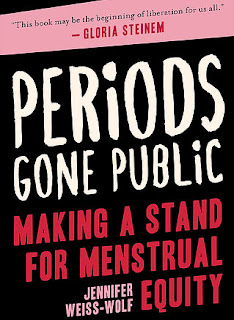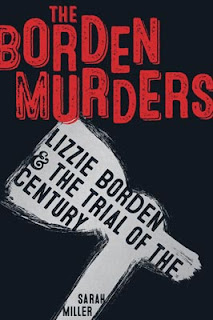 |
| Chris Whipple, photo by David Hume Kennerly |
Chris Whipple is the author of the new book The Gatekeepers: How the White House Chiefs of Staff Define Every Presidency. He is a documentary filmmaker, journalist, and speaker, and has worked for CBS's 60 Minutes and ABC's Primetime. He was executive producer and writer of Showtime's The Spymasters.
Q: In your epilogue, written last December, you say, “For
Trump’s chief, the job also carries a profound responsibility. He may well
represent the thin line between the president and disaster.” How do you think
Reince Priebus and General John Kelly have done so far?
A: That’s more true than ever. We’re now in the midst of a
crisis with an unpredictable tyrant in North Korea and a guy who tweets
irrationally and calls him Little Rocket Man and the stakes are really high.
Kelly is the thin line between the president and disaster.
I think I said in the epilogue that Trump is likely to go
through several chiefs of staff, and if Trump of all people does not empower
the chief of staff as the first among equals, he would get nothing done.
That’s what happened in the first six months with Reince
Priebus. He made rookie mistakes. He was out of his depth without White House
experience. At the end of the day, the real failure was Donald Trump’s decision
not to empower Priebus as first among equals. Priebus never had a real chance
of executing Trump’s authority. You had all these competing rivals. It was the
most dysfunctional White House in modern history, but it’s not fair to pin it
all on Priebus.
With Kelly, there’s no question Kelly has done a better job
of making the trains run on time in the West Wing. He managed to impose
discipline. But that’s the easy part. The hard part is telling the president
what he does not want to hear, and it’s not clear Kelly [has done that].
We learned a number of things about Kelly in a
really inept performance [in his recent press briefing]. He really was out of
his depth.
There have been really good White House chiefs. I suggest he
call [former chief of staff] Leon Panetta. Other good ones, James Baker, Ken
Duberstein, understood that when you go before television cameras, you’re not
speaking as a Marine. You have to stay above the fray. You can’t do what Kelly did
and go off on a tirade against an elected official without hurting your
credibility, and that is the coin of the realm for a chief of staff.
The other thing that’s important and disillusioning—let’s
assume Trump learned a lesson, that you have to empower a White House chief. He
has not learned that governing is completely different from campaigning, [which
involved] demonizing, dividing, disrupting. With governing, you have to compromise. Trump is inept and
Kelly doesn’t seem to understand governing any better than Trump does. He’s
doubling down on Trump’s worst [instincts].
Q: You describe Nixon’s chief of staff, H.R. Haldeman, as
the “first truly modern White House chief of staff.” What was in place before
that, and how did he define the role?
A: You can make the argument that the first modern chief of
staff was Sherman Adams, under Eisenhower. He was a gatekeeper. He was called
“the Abominable No-Man.” But I think Nixon and Haldeman looked at the
Eisenhower model and decided to take it to another level.
Haldeman is credited with the modern template—a gatekeeper
but also an honest broker of information, in charge of the information flow,
the communications, making sure everybody is on the same page. There’s been no
such thing as a Cabinet government since Nixon. Nixon emphasized that Haldeman
would be the “son of a bitch” that everybody would answer to.
Haldeman created the template—you talk to [Dick] Cheney and
others who were at a conference with Haldeman [years after he had left the White House] and
they were all blown away by Haldeman. He understood how the White House should
operate.
The great irony is that the guy who wrote the book on how to
be chief went to prison. At the end of the day, he failed to speak hard truths
to Nixon during the Watergate coverup, but that may have been Mission
Impossible.
Q: You mentioned Panetta, Baker, and Duberstein—do you see
any others as among the best chiefs of staff, and why?
A: Almost everybody would agree that James Baker was the
gold standard. I would put Leon Panetta in the same league, and Duberstein was
very effective. Erskine Bowles, Dick Cheney was a terrific chief of staff.
Baker and Panetta stand out. They could walk into the Oval,
close the door, and tell the president what he didn’t want to hear. They were
grounded. They were confident in their own skin. Temperament is sometimes
underrated in White House chiefs of staff. Kelly showed [at the press
conference] that he may not have the temperament.
In the case of both of those guys, neither Reagan nor
Clinton would have had a second term without them.
Q: What about the worst?
A: Don Regan [in the Reagan administration] has always owned
that. When [he and Baker] swapped jobs, it was the most disastrous job swap in
political history. Regan was completely unsuited to be White House chief of
staff. Baker used to say the most important word was “staff,” not “chief,” and
Nancy said [Regan] liked the sound of “chief”—he was arrogant and entitled.
As Ken Duberstein put it, he thought Reagan was the retired
chairman of the board and he was the CEO. It was a disaster. He didn’t notice that
something was brewing in the White House basement—the Iran-contra affair. It
never would have happened on Baker’s watch. Regan was not savvy enough to see
it coming.
Peggy Noonan said of Baker that he’s a Texas lawyer, they
don’t do bibles baked in cake. It gives you an idea of how consequential the
job can be. Regan owns that.
Sam Skinner had a really rough run as George H.W. Bush’s
chief, replacing Sununu. It’s too early to put Reince Priebus in his place
historically, but he had a tough six months.
Q: Are you working on another book?
A: I’m working on a new chapter for this book, for the
paperback, which will be out in April or mid-March. I’ve got to do a chapter on
Trump and his chiefs.
--Interview with Deborah Kalb




























